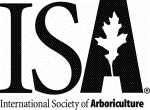
| Current Articles |
| Browse Archives |
| Search |
| Contact Us |
| AUF Home |
 |
Arboriculture & Urban Forestry Online
| Volume 26, Issue 3 —
May 2000
https://www.isa-arbor.com/Publications/Arboriculture-Urban-Forestry |
|
Specification of Soil Volume and Irrigation Frequency for Urban Tree Containers Using Climate Data (View PDF) Arthur T. DeGaetano Abstract: Typically, limitations in soil volume deprive urban trees of water supplies adequate to meet evapotranspirational demand, resulting in suboptimal tree survival, health, and development. Proper sizing of urban tree containers can mitigate these unfavorable consequences. Current recommendations of appropriate soil volumes for urban trees are based on average climate conditions and therefore do not address daily and annual variations in weather. The method developed in this paper uses daily climatological data to estimate the soil volume necessary to provide some minimal amount of moisture during the driest growing season likely to be encountered during an urban tree's expected lifespan. This method allows a range of historic weather conditions to be taken into account. For example, in New York City, without irrigation a mediumsized tree (6-m [20-ft] crown diameter) grown in 17 m3 (600 ft3) of soil would face a water deficit (<50% available water capacity) every other year. When provided with 27.4 m3 (967 ft3) of soil, this tree would face a deficit only once in 10 years. If only 4.3 m3 (152 ft3) of soil volume can be supplied, such a tree, when irrigated approximately once every 5 days, would face a water deficit (<70% available water capacity) once in 10 years. Keywords: Urban forestry; soil water content; plant/soil water relations; evapotranspiration; Penman-Monteith equation. |
Current Articles
| Browse Archives | Search | AUF Home | ISA Home
| Get Acrobat